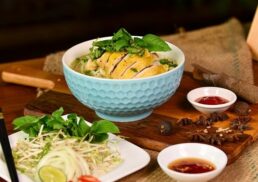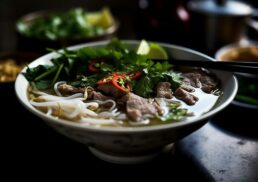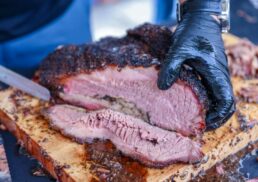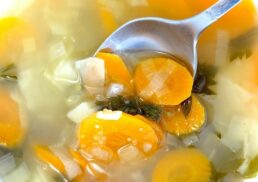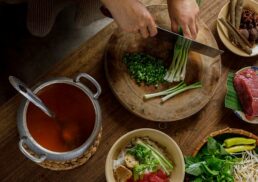Are you craving the authentic taste of Chinese cuisine? Look no further. This article uncovers the essence of food Chinese, from timeless street food to elegant banquet dishes. Whether you’re curious about the regional flavors or the history behind each bite, we’ve got your taste buds covered without giving away the secret ingredient of every recipe.
Table of Contents
Key Takeaways
Chinese cuisine is rich and diverse, with each region offering unique flavors and dishes like Hainanese Chicken Rice and Peking Duck, plus an array of spicy Sichuan classics.
Dumplings are central to Chinese food culture, with varieties like jiaozi and xiaolongbao, and play a special role during the Lunar New Year for prosperity.
Dining in China is a social and cultural event, featuring specific etiquette such as seating arrangements and chopstick usage, and regional cuisines vary greatly, from Shandong’s seafood to Sichuan’s spicy offerings.
Exploring the Essence of Chinese Cuisine
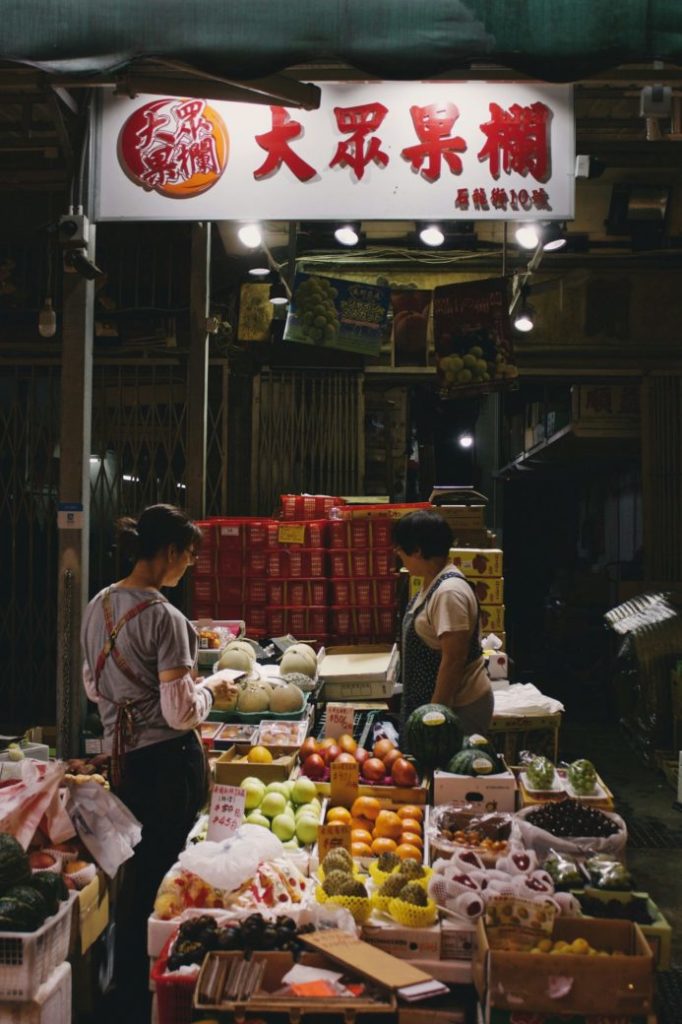
Chinese cuisine, known for its color, aroma, taste, and appearance, stands high on a global pedestal, sharing the stage with French and Turkic cuisines for its historical richness and cultural significance. It’s not just about the food. It’s about an art that combines the careful selection of ingredients, meticulous processing, and precise control of cooking techniques, reflecting an emphasis on nourishment and flavor.
The essence of Chinese cuisine lies in its diversity, a reflection of the country’s vast geography, varied climate, historical events, and cultural influences. From the hot and numbing flavors of Sichuan cuisine to the fresh and salty flavors of Shandong cuisine, every region in China has a distinct culinary identity, shaped by local resources and cultural preferences.
From the delicious soup to the sizzling sound of stir-fried noodles to the aromatic allure of fried rice, the essence of Chinese cuisine is an orchestra of sensations that satisfy the senses. Each bite of a Chinese dish is a testament to its rich history and the meticulous preparation that goes into it.
So, are you ready to embark on this flavorful journey?
Delving into Popular Chinese Dishes
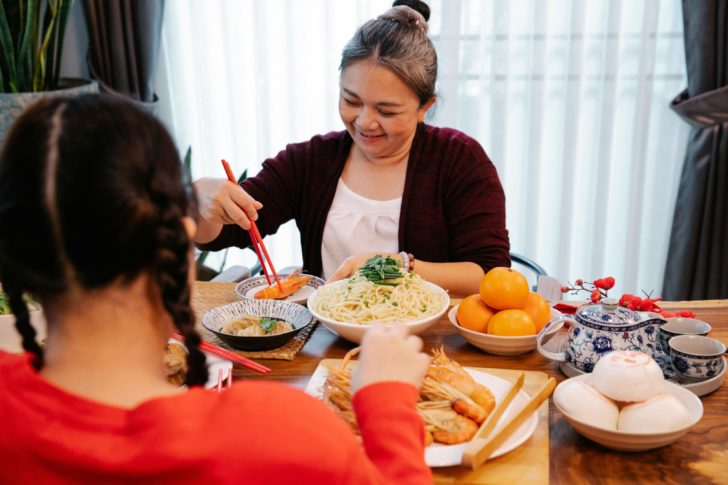
Imagine biting into a succulent piece of Hainanese Chicken Rice, the star dish of Hainan, where the combination of poached chicken and flavorful rice cooked with ginger, scallion, and garlic makes a melody of flavors dance on your tongue. Now, picture savoring a slice of Peking duck, a delicacy from Beijing, celebrated for roasted duck and its thin, crispy skin, served fresh from the oven with pancakes, sweet bean sauce, hoisin sauce, or soy with mashed garlic.
Now, let’s turn up the heat with some more spicy food classics from Sichuan province. Here are some dishes you should try:
General Tso’s chicken: marinated poultry deep-fried or cooked with dried chili, nuts, and sauces like hoisin and soy sauce
Kung Pao Chicken: marinated poultry cooked with dried chili, nuts, and sauces like hoisin and soy
Char Siu: a quintessential Cantonese barbecue pork, marinated with a blend of spices including five-spice powder, honey, and red yeast, and then roasted to achieve a sweet and succulent flavor
These dishes are sure to set your taste buds ablaze.
Chinese cuisine isn’t just about chicken and pork. Beef and lamb dishes are also prominent, often seasoned with black and bean paste or oyster sauce and varying in spiciness, while seafood options offer delights like fried shrimp or squid. Chinese cuisine dates back centuries, with dishes like Chinese Hamburgers rooted in the history of the Qin Dynasty.
The World of Chinese Dumplings

Step into the world of Chinese dumplings, where every fold tells a story, and every bite is a celebration. Dumplings, or jiaozi, filled with meat and vegetables, and wontons, featuring less filling and thinner dough, are a staple in Chinese cuisine. Xiaolongbao, traditionally steamed in bamboo baskets, and baozi, classified into large (dàbo) and small (xiobo) buns, are other varieties that are hard to resist.
Filling these pockets of joy are a variety of ingredients like:
minced pork
diced shrimp
ground chicken
beef
vegetables
With specialty fillings like crab meat in Xiaolongbao, these soup dumplings can be prepared in multiple ways such as boiled, steamed, pan-fried, deep-fried, or served in hot pot of soup, offering a dumpling for every palate.
Dumplings are more than just a delicious snack. They are a staple during the Lunar New Year celebrations, with the belief that the more dumplings consumed, the more prosperity one will bring in the upcoming year. The modern practice of Dim Sum, including dumplings, evolved from ‘yum cha’ and expanded in Cantonese cuisine, becoming a global tradition enjoyed at brunch.
Comfort in a Bowl: Chinese Noodle and Rice Dishes
Imagine sitting down to a bowl of steaming hot fried rice or chow mein, both examples of typical Chinese food. These dishes are staples in Chinese cuisine, offering diverse options which include a variety of meats and vegetables. Fried rice, considered a complete meal in Chinese culture, comes in several popular varieties, such as:
Yangzhou fried rice, which is the most famous in China
Shrimp fried rice, a popular seafood option
Vegetable fried rice, a vegetarian-friendly choice
Chicken fried rice, a classic favorite
These delicious dishes are sure to satisfy your cravings for Chinese cuisine, especially if you’re a fan of Americanized Chinese food.
Chicken fried rice, a common variant, often includes egg and vegetables, and can be adapted to feature different proteins such as seafood or others. For the perfect consistency in deep fried pork and rice dishes, it’s recommended to use leftover rice, which may be easily combined with meat or vegetables from a previous meal to create a new dish.
Rice and noodles aren’t just about comfort. They are a testament to the adaptability and diversity of Chinese cuisine. From the simple yet satisfying bowl of fried and rice noodles to the complex flavors in a plate of chow mein, these dishes offer a taste of home, one that is shared by millions across the globe.
Savoring Chinese Street Food
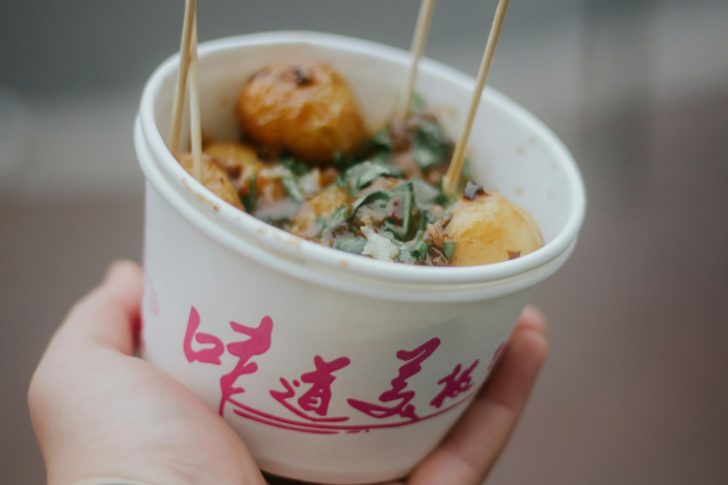
Take a stroll down the streets of any Chinese city, and you’ll be greeted by a feast for the senses. The aroma of youtiao, a breakfast street food, and baozi with various fillings fill the air, starting the morning on a delicious note. The Chinese hamburger features tender braised pork belly, while scallion pancakes offer savory comfort with scallion and sesame oil.
If you have a sweet tooth, street food has got you covered too. Sweet treats like Put Chai Ko and Bing Tanghulu bring delight with flavors ranging from sweet and sour to the caramelized sweetness of sugar-coated fruits. Engaging with street food isn’t just about satisfying your cravings. It’s a social activity, reflecting the dynamic food culture and daily rhythm of life in China’s urban spaces.
The Social Experience of Chinese Dining
Dining in China is not just about the food. It’s a social experience, steeped in tradition and etiquette. Seating arrangements at Chinese dining events are designed to manifest respect and hierarchy, often placing the guest of honor in a seat facing the entrance. The act of ordering at a Chinese meal is considerate of the guests’ preferences and any dietary restrictions, underscoring the importance of hospitality in Chinese dining culture.
Etiquette in Chinese dining settings dictates that diners wait for the host to signal the start of the meal, consume food gracefully, and ensure their actions do not disturb others at the table. Proper chopstick usage is crucial in maintaining decorum at the dining table, as sticking chopsticks vertically into rice is taboo due to its association with death, and communal dishes should be served clockwise around the table.
Drinking ceremonies often involve a protocol for toasting, where respect is expressed by handling the glass with both hands, and moderation is emphasized. Tea is poured with both hands to display respect and tea service is carried out with meticulous consideration for cleanliness.
Departing guests do so discreetly, taking care to thank the host, thereby preserving the refined atmosphere and maintaining respect at the conclusion of a Chinese dining event.
Exquisite Regional Specialties
Chinese cuisine is a symphony of regional specialties, each with its unique flavors and cooking methods. Preferences for staples like rice and noodles vary significantly between southern and northern regions respectively. Beyond the eight major regional cuisines, Beijing and Shanghai have their own distinctive culinary offerings.
Shandong cuisine showcases fresh, salty flavors with a focus on seafood, using simple seasonings to enhance the natural taste. Sichuan cuisine is recognized for the numbing sensation of Sichuan peppercorn, whereas Hunan cuisine is known for its hot and sour flavors, without the numbing attribute.
Cantonese cuisine from Guangdong favors mild sauces and light seasoning, resulting in sweeter dishes complemented by fine seafood and rice. One popular example is the use of sweet and sour sauce in some dishes. Jiangsu and Zhejiang cuisines prioritize the sweetness and lightness of flavors in spicy sauce and their seafood dishes, paying special attention to artistic presentation and the healthiness of the food.
Decoding Chinese Food Menus
Decoding Chinese food menus can be a fun and enlightening exercise. Dish names often include references to the cooking method, such as ‘stir-fried,’ ‘steamed,’ or ‘braised,’ which can guide diners in understanding how the dish is prepared. Historical or poetic names, such as ‘Ants Climbing a Tree’ for sautéed glass noodles with ground pork, provide cultural context and invite diners to learn the story behind the dish.
Sichuan pepper is noted for its unique numbing effect, and dishes with names that include ‘ma la,’ such as ‘ma la xiang guo,’ indicate the presence of this intense flavor. Key ingredients, such as ‘gong bao chicken’ that showcases diced chicken, peanuts, and chili peppers, often feature centrally in the names of dishes, giving diners insight into the main elements of the dish.
To ensure a balanced meal, aim to select a variety of dishes that include different proteins and vegetables, as well as a mix of cooking methods. Some examples of traditional Chinese dishes to consider are:
Kung Pao Chicken
Mapo Tofu
Sweet and Sour Pork
Gong Bao Shrimp
Ma Po Eggplant
General Tso’s Chicken
Menus outside of China might offer dishes that are adapted to local tastes and might not be authentic representations of traditional Chinese cuisine.
Check out The 10 Most Popular Dishes in China And Where to Find Them.
Summary
In our journey through the vast expanse of Chinese cuisine, we’ve delved into the essence of this rich culinary tradition, explored popular and famous dishes together, dived deep into the world of dumplings, sought comfort in bowls of noodles and rice, savored street food, experienced the social aspects of dining, discovered regional specialties, and decoded Chinese food menus.
From the meticulous preparation of dishes to the diverse regional flavors, Chinese cuisine is a testament to the country’s historical richness and cultural significance. Each traditional dish here, whether it’s a humble serving of fried rice or an extravagant Peking duck, tells a story of its own, offering a taste of China’s vibrant culture and history.
As we conclude our culinary journey, we hope you’ve gained a deeper understanding and appreciation of Chinese cuisine. Each bite is a celebration of tradition, a dance of flavors, and a testament to the love and care that goes into the preparation of the food. Remember, Chinese cuisine is more than just food. It’s a cultural experience, a social event, a tradition passed down generations, and above all, a celebration of life.
Frequently Asked Questions
What are some of the popular Chinese dishes?
Some of the popular Chinese dishes are Hainanese Chicken Rice, Peking Duck, Kung Pao Chicken, and Char Siu. These are just a few examples of the delicious cuisine you can explore!
What are Chinese dumplings?
Chinese dumplings, known as jiaozi, are a type of food made by wrapping a filling of minced meat, and/or vegetables in thin dough. They can be boiled, steamed, pan-fried, or deep-fried, and are a popular dish in Chinese cuisine.
What’s unique about Chinese street food?
Chinese street food is unique for its vibrant and diverse offerings, including breakfast staples like youtiao and sweet treats like Put Chai Ko and Bing Tanghulu.
What’s the social experience of Chinese dining like?
Chinese dining is a social event filled with tradition and etiquette, from seating arrangements to chopstick usage and drinking ceremonies. It’s a unique and thoughtful experience.
What are some regional specialties in Chinese cuisine?
Chinese cuisine offers a range of regional specialties. Shandong cuisine is famous for its fresh, salty flavors and focuses on seafood, while Sichuan cuisine is known for the numbing sensation of Sichuan peppercorn. Enjoy exploring these diverse flavors and styles!
